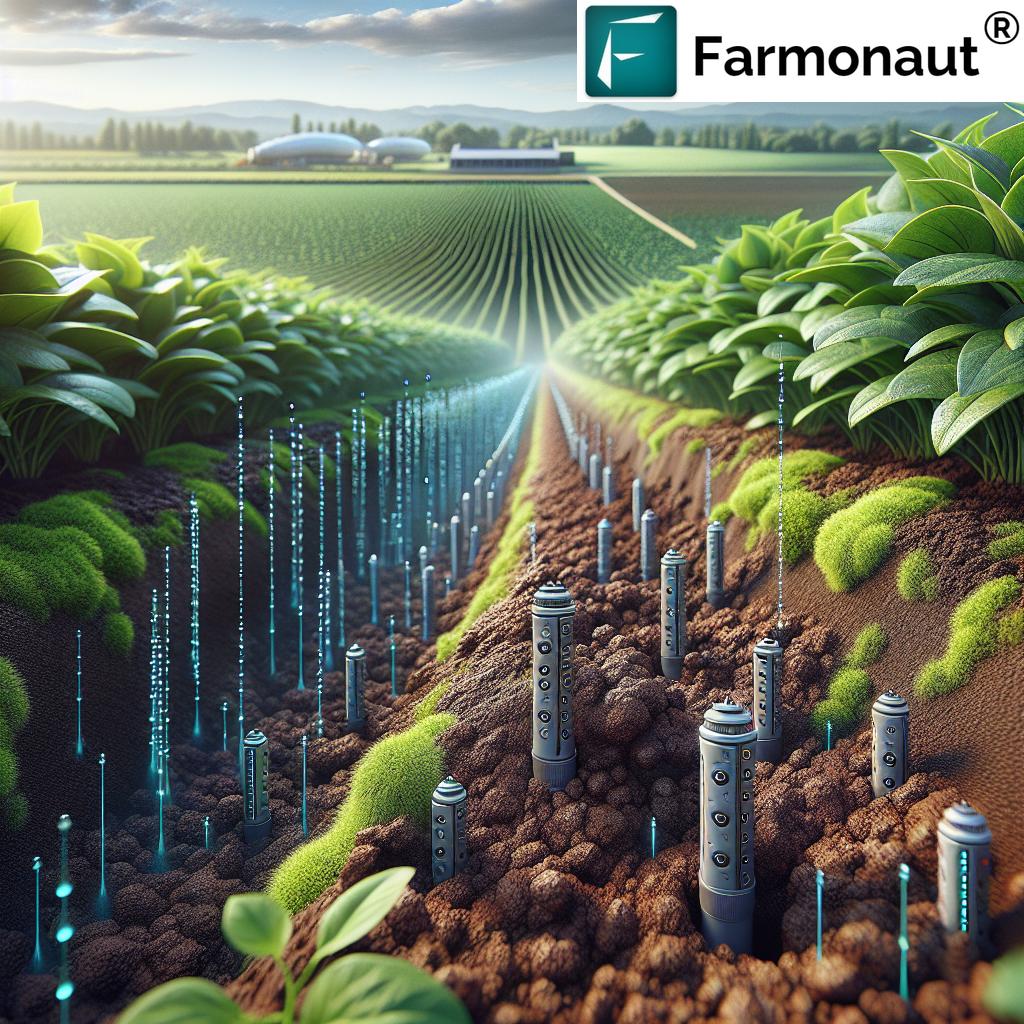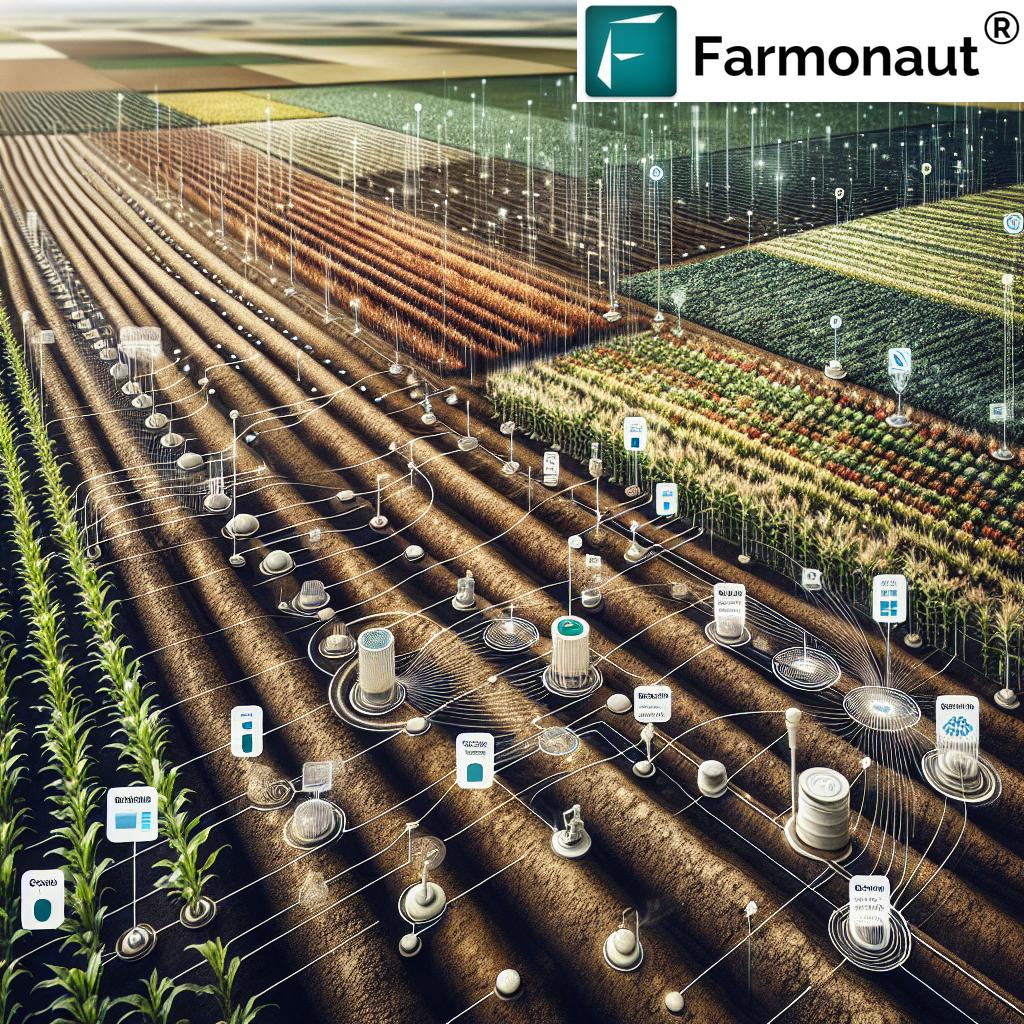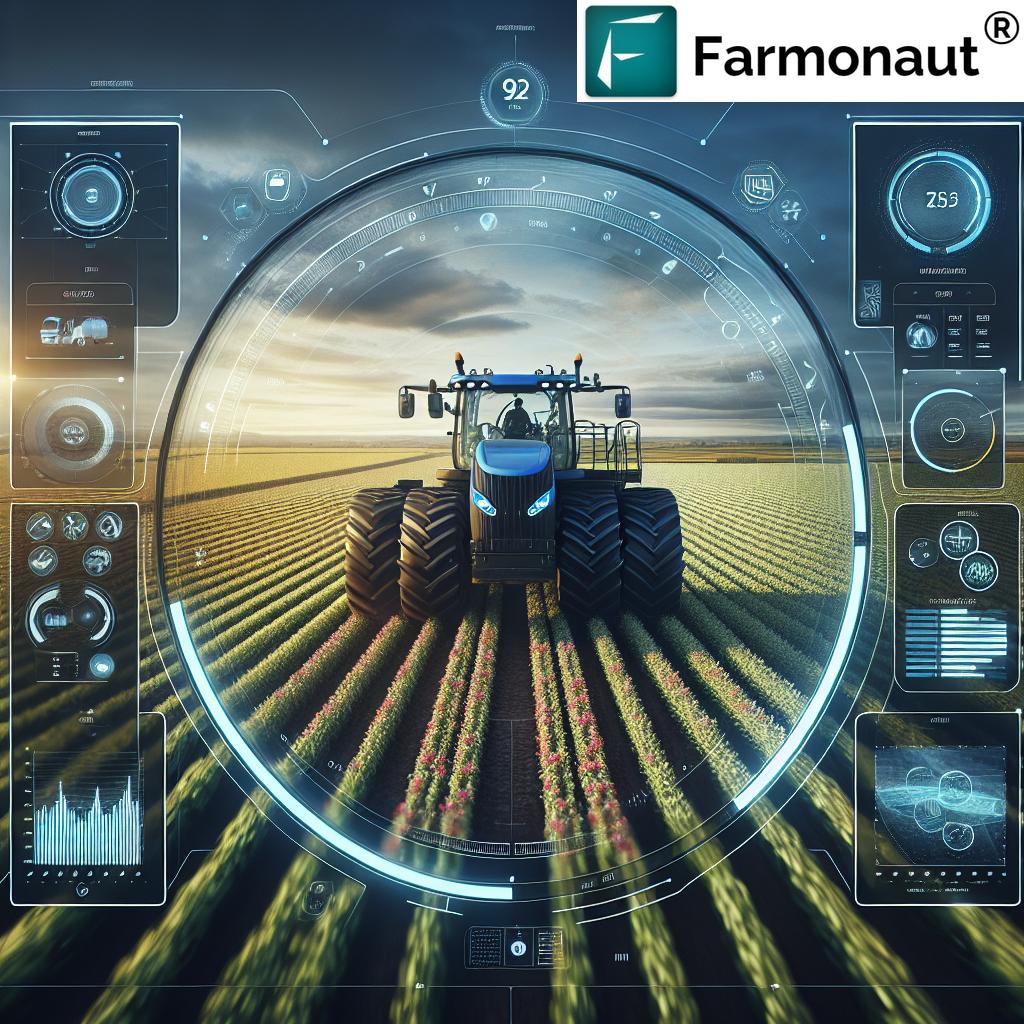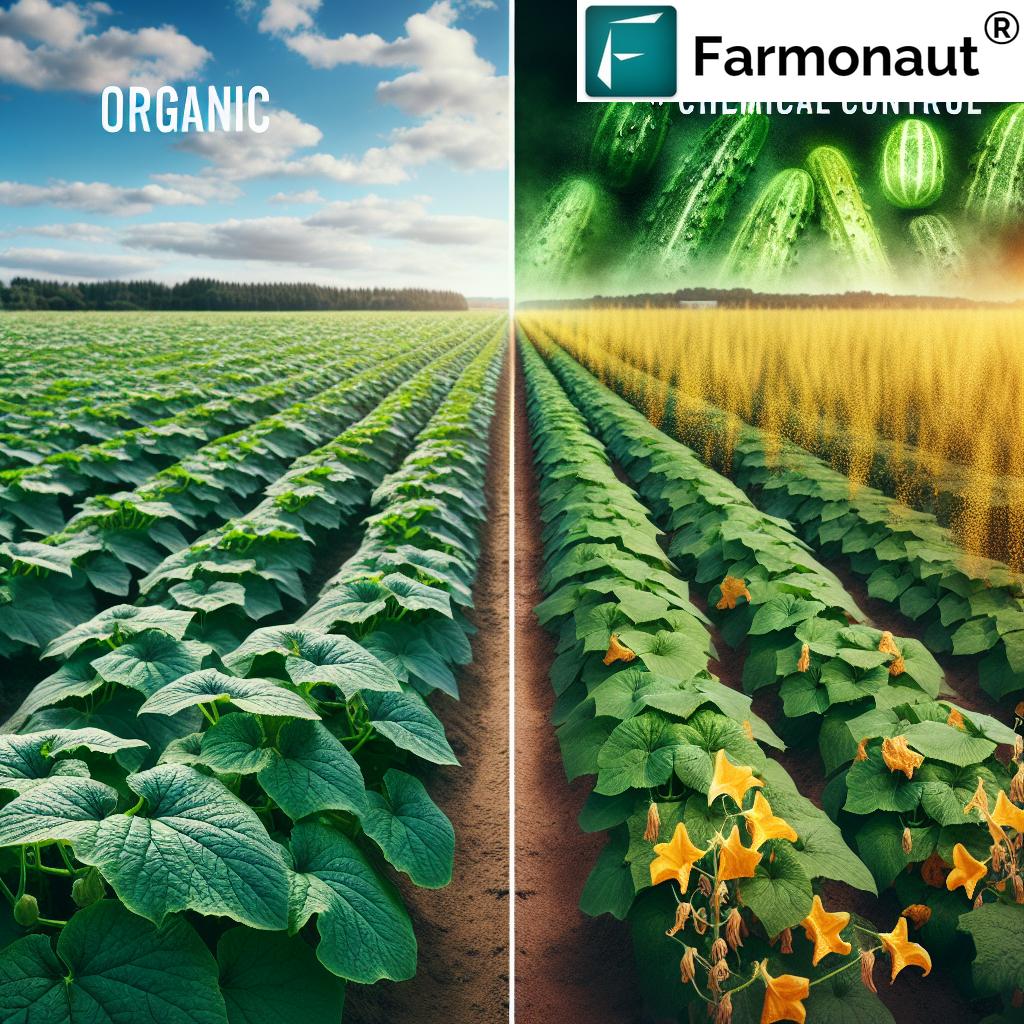Boost Yields Fast: Precision Grow Soil Moisture Sensors
“Soil moisture sensors can reduce irrigation water use by up to 30% while maintaining optimal crop yields.”
- Introduction: Soil Moisture Sensors and Precision Agriculture Solutions
- Understanding Soil Moisture Sensors
- Types of Soil Moisture Sensors: Capacitance, Tensiometers, TDR, FDR, Gypsum, Neutron Probes
- Farmonaut: Innovating Precision Farming with Data-Driven Insights
- Benefits of Soil Moisture Probes in Precision Agriculture
- Comparative Benefits Table: Precision Moisture Sensors vs. Traditional Irrigation
- How to Implement Soil Moisture Sensors Optimally
- Challenges and Considerations in Sensor Integration
- Future of Agricultural Sensor Technologies
- Farmonaut Apps & Solutions: Affordable Precision for Every Farm
- FAQ: Precision Grow Soil Moisture Sensors
Introduction: Soil Moisture Sensors and Precision Agriculture Solutions
As global food demand rises and climate unpredictability increases, efficient agricultural practices are more critical than ever. Modern precision agriculture solutions are revolutionizing the way we farm, integrating cutting-edge sensor technologies to optimize irrigation, boost yields, and promote environmental sustainability. At the forefront of these advances are soil moisture sensors, pivotal tools that use real-time data to enhance irrigation management, maximize crop yield optimization, and conserve vital resources.
We at Farmonaut believe that accessible, data-driven agricultural management is the foundation of sustainable agriculture practices worldwide. By harnessing the power of soil moisture sensors and digital farm intelligence, we empower farmers of all scales to make informed decisions, ensuring each crop receives adequate water for optimal growth. In this comprehensive guide, we’ll explore how soil moisture sensors work, the available technologies, their benefits, and how you can integrate them into your own farming operations—unlocking higher profits and resource efficiency for your land.
Understanding Soil Moisture Sensors: A Foundation for Precision Agriculture
Soil moisture sensors are advanced devices designed to measure the volumetric water content within the soil. Through continual monitoring, they offer valuable insights into moisture levels—enabling farmers to directly understand soil water availability for their crops. The primary objective of these sensors is to ensure that each plant receives adequate water—not too much, not too little.
Accurate data from soil moisture sensors guides irrigation schedules for maximum yield, minimal waste, and sustainable use of water resources. This informed approach transforms traditional farming into a data-driven agricultural management system:
- Optimize Irrigation Timing: Water crops when they actually need it.
- Conserve Water: Eliminate runoff and overwatering.
- Promote Sustainable Practices: Reduce environmental impact by ensuring optimal use of resources.
Types of Soil Moisture Sensors: Matching Technology to Your Fields
There are several types of soil moisture sensors, each employing distinct technologies to measure and report soil moisture levels, adapting to different farming requirements. Understanding which sensor technology is right for your soil, crops, and budget helps ensure you’re maximizing the value for your operation.
Let’s examine the most prevalent types of soil moisture sensors and their unique advantages in agricultural applications:
-
Capacitance Sensors
- Measure the dielectric permittivity of the soil. This value correlates with moisture content.
- Known for reliability and durability even in challenging soils.
- Ideal for continuous monitoring in both open fields and greenhouses.
-
Tensiometers
- Gauge soil water tension, indicating the energy required for plant roots to extract water.
- Precise measurements make them widely used in irrigation management tools.
-
Time Domain Reflectometry (TDR) Sensors
- Send electromagnetic pulses through the soil, tracking the reflection time for accurate readings.
- Adaptable to various soil textures; deliver quick data for real-time decisions.
-
Frequency Domain Reflectometry (FDR) Sensors
- Analyze electromagnetic properties of the soil at distinct frequencies to determine moisture levels.
- Highly accurate—ideal for research or high-value crops, though more costly.
-
Gypsum Blocks
- Passive sensors that measure soil electrical resistance for a cost-effective solution.
- Require periodic calibration to ensure ongoing accuracy.
-
Neutron Moisture Probes
- Measure soil moisture using neutrons—highly accurate, but require trained operators and increase initial setup cost.
Choosing the right soil moisture sensor depends on your crop, soil type, budget, and desired data frequency. It’s about balancing cost, accuracy, and ease of integration into your current farming systems.
Farmonaut: Innovating Precision Farming with Data-Driven Insights
At Farmonaut, we’re dedicated to accelerating the adoption of agricultural sensor technologies—not just to track soil moisture levels, but to elevate every aspect of farm management. Using satellite-based monitoring, AI-driven advisories, and cloud-powered platforms, Farmonaut makes precision agriculture affordable, scalable, and actionable for everyone.
- Satellite-Based Crop Health Monitoring: Our platform utilizes multispectral imagery to deliver real-time soil moisture, crop health (NDVI), and weather data. This empowers farmers to make immediate, informed decisions that optimize yield and reduce wastage.
- AI Advisory (Jeevn): Offers personalized, real-time farm advice with recommendations on irrigation, fertilization, and pest control—integrating the latest satellite, weather, and sensor data.
- Blockchain-Based Traceability: Our traceability solutions use blockchain to make agricultural supply chains transparent, secure, and tamper-proof—ensuring market and consumer trust.
- Fleet & Resource Management: Streamline farm logistics and machinery with our fleet management tools—improve efficiency and reduce operational costs.
- Carbon Footprinting: For climate-conscious operations, carbon footprinting tools help monitor and mitigate environmental impact using real-time emissions data.
- Financing, Crop Loan & Insurance: Using satellite verification, we assist financial institutions and farmers alike in crop loan approvals and agricultural insurance, making access to finance easier and more secure.
Our web, Android, iOS Apps and robust API (API, Developer Docs) mean you can integrate real-time soil and crop data into any farm operation, research project, or agricultural business—without expensive hardware installations.
Benefits of Soil Moisture Probes in Precision Agriculture
Integrating sensors in farming delivers a wide range of tangible and strategic benefits for both smallholders and large agribusinesses. By employing real-time soil data and adopting advanced irrigation management tools, we pave the way for greater crop yields, sustainability, and profit.
- Optimized Irrigation: By providing precise data on current soil moisture levels, these sensors enable farmers to apply water only when and where crops need it—preventing over- or under-watering.
- Improved Crop Yields: With adequate water availability directly informing root growth and plant health, precision irrigation leads to higher yields and more resilient crops.
- Water Conservation: In drought-prone or water-scarce areas, waste reduction is paramount. Soil moisture sensors can help save up to 30% of irrigation water per season, boosting resource conservation.
- Reduced Labor and Input Costs: Automated irrigation systems guided by sensor data minimize manual labor, cut energy costs, and reduce the need for repeated field visits.
- Environmental Protection: Avoiding over-irrigation reduces nutrient leaching and groundwater pollution, supporting core sustainable agriculture practices.
- Regulatory and Reporting Compliance: Digital data logs from sensors facilitate compliance with water use regulations and traceability for market access.
“Precision agriculture technologies can increase farm productivity by as much as 20% through targeted irrigation management.”
Comparative Benefits Table: Precision Moisture Sensors vs. Traditional Irrigation
How do soil moisture sensors stack up against traditional irrigation practices? Our data-driven table below illustrates the quantitative improvements achievable with precision agriculture solutions.
| Irrigation Method | Estimated Yield Increase (%) | Water Saved (%) | Estimated Cost Savings per Acre ($) | Improvement in Crop Quality (1–10 scale) |
|---|---|---|---|---|
| Traditional Irrigation | 0% (Baseline) | 0% (Baseline) | $0 | 5 |
| Precision Moisture Sensors | 10–20% | 20–30% | $50–$100 | 8–9 |
As shown, soil moisture sensors can help increase yields, boost crop quality, save water, and generate substantial cost savings, justifying their initial investment—especially over the long term.
How to Implement Soil Moisture Sensors Optimally
Extracting the best results from soil moisture sensors requires proper installation, ongoing calibration, and data validation. Below, we outline four essential steps for optimal deployment and maximal benefit:
-
Strategic Placement:
- Install sensors in representative zones based on crop layout, soil type variations, and topography to gather the most actionable insights.
-
Multiple Depths:
- For deep-rooted crops or heterogeneous soils, use sensor probes at several depths—building a full root-zone profile for improved irrigation management.
-
Regular Calibration:
- To preserve accuracy, calibrate your probes periodically—particularly during season transitions, or after major cultivation activities.
-
Proper Installation and Data Validation:
- Follow the manufacturer’s installation guidelines to prevent air gaps or poor soil contact; cross-check digital readings with physical samples for quality assurance.
By adhering to these steps, we ensure that sensor data remains reliable and actionable—forming the backbone of effective water management and crop yield optimization.
Challenges and Considerations in Sensor Integration
While the benefits of soil moisture sensors are significant, adopting this technology comes with a set of challenges that require careful consideration and field-specific planning.
- Initial Cost: Investing in high-quality sensor systems can be costly, although the long-term cost savings in water and labor often offset these expenses.
- Data Interpretation: Farmers must be trained to accurately understand and apply sensor data—a critical factor in maximizing return on investment.
- Integration: Seamless integration with existing irrigation and farm management systems sometimes requires custom solutions, planning, and support.
- Maintenance: Sensors require regular maintenance—including cleaning, checking connections, and recalibration—to guarantee ongoing accuracy.
Overcoming these challenges involves selecting the right sensor type for your context, committing to training and routine, and ensuring your digital and field systems are compatible.
The Future of Agricultural Sensor Technologies
The market for soil moisture sensors and agricultural sensor technologies is poised for exponential growth. The ongoing digital transformation in farming—driven by affordable sensors, wireless connectivity, and AI-powered analytics—promises even greater accuracy and broader adoption ahead.
- We anticipate rapid advances in remote field sensor deployment, with IoT-enabled probes communicating directly via cloud platforms for real-time, cross-device precision.
- Integration with satellite imagery and farm management apps (such as the Farmonaut Platform) will make it possible to remotely monitor vast agricultural landscapes—enabling better decision-making at any scale.
- Expect further cost reductions, making precision farming accessible to smaller operations and emerging economies.
As the drive for sustainable agriculture practices intensifies, soil moisture sensors will become core components in the quest for food security, profitability, and responsible resource use—changing farming for good.
Farmonaut Apps & Solutions: Affordable Precision for Every Farm
Harnessing precision agriculture solutions is no longer a luxury. Thanks to Farmonaut’s cloud-powered platform, farmers can deploy advanced soil monitoring, crop advisory, and farm management systems without high upfront costs or technical complexity.
- Web, Mobile, and API Access: Our solutions are available everywhere—the Web App (Open Web App), Android (Google Play), iOS (App Store), and via API (API docs).
- Traceability: Transparent supply chains with our product traceability module, building trust for both large food brands and local producers.
- Large Scale Farm Management: For cooperatives and agribusinesses, our large-scale farm management solution delivers advanced monitoring and resource allocation—from planting to harvest.
- Crop, Plantation, and Forest Advisory: Our platform extends to forestry and commercial plantations, offering insights on carbon sequestration, disease risks, and more.
Farmonaut is committed to open, affordable, and scalable precision agriculture for all.
FAQ: Precision Grow Soil Moisture Sensors
What are soil moisture sensors and how do they work?
Soil moisture sensors are devices that measure the volumetric water content of soil. They operate by assessing the physical or electrical properties of soil (such as capacitance, dielectric permittivity, or resistance) that change as moisture levels change—providing real-time data for precision irrigation management.
Why should I invest in soil moisture sensors instead of using traditional irrigation?
Unlike traditional irrigation, soil moisture sensors optimize water use, reducing waste and ensuring crops receive adequate hydration for improved yields, better crop quality, and lower operational costs.
How do I know which type of soil moisture sensor is right for my farm?
The right sensor depends on your soil type, main crops, budget, and desired accuracy. For most field crops, capacitance and TDR sensors strike a great balance between cost and precision, while FDR sensors or neutron probes offer high-end options for research and commercial growers.
Can I integrate soil moisture sensors with satellite-based platforms like Farmonaut?
Yes! While Farmonaut primarily utilizes satellite imagery for soil moisture, crop health, and weather analytics, the platform is designed for integration with external sensor data and robust API access, making it easy to combine field-level and satellite-derived insights.
How do I maintain accuracy in my sensor readings over time?
Regular calibration, correct installation, and occasional cross-checks with physical field samples are crucial for maintaining accuracy over time. Ensure sensors are installed according to manufacturer recommendations and recalibrated at seasonal intervals.
Conclusion: Transforming Agriculture with Precision Moisture Sensors
Soil moisture sensors stand at the heart of precision agriculture solutions, providing farmers with the data and tools necessary to optimize irrigation, increase crop yields, and adopt sustainable farming practices. As agriculture becomes ever more data-driven, adopting precision irrigation management tools is essential for every grower, from smallholdings to global agribusinesses.
With platforms like Farmonaut, integrating real-time soil data, satellite analytics, and AI-driven decision support is finally accessible and affordable—no matter where you farm. Stay ahead. Grow smarter. Make every drop of water and every inch of soil count, today and for generations to come.
















I like the efforts you have put in this, regards for all the great content.